January 25
Climate Change: Past and Present
By Frank DeCourten
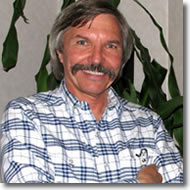 For more than four billion years, the Earth's complex climate system has been responding to a variety of forcing mechanisms that have periodically produced intervals of prolonged cooling as well as epochs of unusual warmth. These "Icehouse" and "Hothouse" oscillations have punctuated the long-term average conditions to create dramatic changes in ancient global landscapes and prehistoric environments. This lecture will explore the complexity of the Earth's climate system, the geological evidence for past climate changes, the effects of such changes on land and life, and the mechanisms by which those changes may have occurred. Current trends in global climate will be examined from the perspective of the long-term natural variations that have been documented in the geological record.
For more than four billion years, the Earth's complex climate system has been responding to a variety of forcing mechanisms that have periodically produced intervals of prolonged cooling as well as epochs of unusual warmth. These "Icehouse" and "Hothouse" oscillations have punctuated the long-term average conditions to create dramatic changes in ancient global landscapes and prehistoric environments. This lecture will explore the complexity of the Earth's climate system, the geological evidence for past climate changes, the effects of such changes on land and life, and the mechanisms by which those changes may have occurred. Current trends in global climate will be examined from the perspective of the long-term natural variations that have been documented in the geological record.
DeCourten's talk initiates a week of discussions at Sierra College (January 27-31, 2008) that are associated with Focus the Nation. At Sierra College, students, faculty, staff, and managers will be invited to attend various discussions, lectures, and events that focus upon solutions to the current climate change crisis.
February 27
The Real 'Day After Tomorrow': Avoiding Dangerous Climate Change
By Jeff Price, Lead Author, IPCC Report, Nobel Prize winner
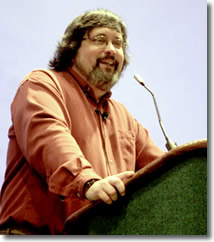 Since pre-industrial times global average temperature has increased by approximately 0.7 degrees C. The United Nations Intergovernmental Panel on Climate Change (IPCC) projects an increase of 1.1-6.4 degrees C by 2100. Published studies suggest significant ecological impacts from this amount of warming, which is already discernible in animal and plant populations. The question is not whether climate change will impact biodiversity. Rather the real question is one of how great the impacts might be and how can conservation managers adapt? Additionally, how will society cope with these and other significant changes and what can be done to prevent or reduce them?
Since pre-industrial times global average temperature has increased by approximately 0.7 degrees C. The United Nations Intergovernmental Panel on Climate Change (IPCC) projects an increase of 1.1-6.4 degrees C by 2100. Published studies suggest significant ecological impacts from this amount of warming, which is already discernible in animal and plant populations. The question is not whether climate change will impact biodiversity. Rather the real question is one of how great the impacts might be and how can conservation managers adapt? Additionally, how will society cope with these and other significant changes and what can be done to prevent or reduce them?
Dr. Price is currently Senior Fellow of Climate Change and Biodiversity for the UNEP—world conservation Monitoring Centre in Cambridge, England. He is Professor of Biology, Geology, and Environmental Sciences at CSU Chico. He is co-author of the Nature article “Fingerprints of Global Warming on Wild Animals and Plants” as well as The Birdwatcher’s Guide to Global Warming. His work has been the subject of a Steve Benson editorial cartoon and is featured in the murder mystery Death of a Songbird by Christine Goff. Dr. Prices and other IPCC scientists shared the 2007 Nobel Peace prize with former Vice President Al Gore.
March 14
Bird Drawing Workshop
by John Muir Laws, noted author and artist
 Naturalist-artist John (Jack) Muir Laws has created an illustrated field guide to more than 1700 species of the Sierra Nevada. Now available, this comprehensive and easy to use guide will assist all Sierra enthusiasts in the identification of trees, shrubs, flowers, mammals, birds, reptiles, amphibians, fish, and insects—even mushrooms and lichens!
Naturalist-artist John (Jack) Muir Laws has created an illustrated field guide to more than 1700 species of the Sierra Nevada. Now available, this comprehensive and easy to use guide will assist all Sierra enthusiasts in the identification of trees, shrubs, flowers, mammals, birds, reptiles, amphibians, fish, and insects—even mushrooms and lichens!
A tireless field naturalist and teach, Jack will discuss the Sierra Nevada Field Guide, his life in the field, and his passion for the Sierra Nevada
Petrified Wood Identification Seminar–8th Annual
By Paleobotanist Walt Wright
A workshop on petrified wood.
April 18
John Muir is Back – and Boy is he Ticked Off!
by Lee Stetson
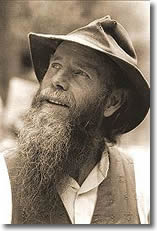 He enters the stage grumbling—mumbling incoherently between huffs and puffs—something about incorrigible politicians and unforgivable misdeeds. John Muir is back—and he's more than simply disappointed.
He enters the stage grumbling—mumbling incoherently between huffs and puffs—something about incorrigible politicians and unforgivable misdeeds. John Muir is back—and he's more than simply disappointed.
Renowned actor Lee Stetson returns to Sierra College with a spell-binding, one-man performance as California’s best known conservationist, John Muir. In a unique medley of his famous scripts, Stetson will blend stories of Muir's adventures in wild America—from Alaska to his beloved Sierra Nevada. Weaving hilarious tales from bear encounters to icy glacier-treks, Stetson spins a yarn like no other. He portrays Muir’s deep compassion for the tree-people and his tireless efforts to conserve wild places in America and throughout the world. His normal, animated and happy story-telling is intermittently interrupted by the expressive realization that Lord Man has failed to heed his precautionary words.
In this new script, Stetson portrays a sometimes angry and frustrated Muir. His patience is tried and his nerves are tender. He has spent his life battling dams and deforestation. He laments the ruthless extinction of nature's perfect assemblage of glorious species. He puzzles about "tourism" and "hiking" as gross distortions of his ideas on how to most purely experience nature's most grand wonders. He rails against the politicians and those who would be swayed by money and power—those who would slay forests and passenger pigeons for the almighty dollar.
The conservation movement lives on in this often hilarious and sometimes passionate plea to keep the spirit of John Muir alive.
April 25
Exploring Argentina
by Dr. Alex Amigo
 Argentina spans broadly from lofty mountains to low wetlands and from arid deserts to lush forests. Entire regions of the country are characterized by their own unique climates, landscapes, plants, and animals. Rich in human and natural history, Argentina is a must-see South American country.
Argentina spans broadly from lofty mountains to low wetlands and from arid deserts to lush forests. Entire regions of the country are characterized by their own unique climates, landscapes, plants, and animals. Rich in human and natural history, Argentina is a must-see South American country.
Join Sierra College Professor of Earth Sciences, Dr. Alex Amigo in a slide-illustrated overview of Argentina—places and features such as the Patagonian steppe, Pampas grasslands, Iguazu Falls and the Perito Moreno Glacier complex. A native of Argentina, Dr. Amigo will lead a 90-day study course this fall.
May 2
An Island of Flowers
by Albin Bills
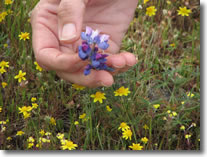 Table Mountain, a remarkable volcanic mesa near Oroville, supports a magnificent remnant California’s rich wildflower biodiversity. Each spring hundreds of visitors converge on this botanical island to enjoy and photograph its spectacular and colorful floral displays. Sheets and plumes of dazzling color surround vernal pools, expansive grasslands, and plunging waterfalls.
Table Mountain, a remarkable volcanic mesa near Oroville, supports a magnificent remnant California’s rich wildflower biodiversity. Each spring hundreds of visitors converge on this botanical island to enjoy and photograph its spectacular and colorful floral displays. Sheets and plumes of dazzling color surround vernal pools, expansive grasslands, and plunging waterfalls.
Albin Bills is author of Wildflowers of Table Mountain. He studied this unique area throughout his entire career teaching field biology at Butte College.
October 24
Arctic National Wildlife Refuge
Joe Medeiros, Diane Carney, Laird Thompson
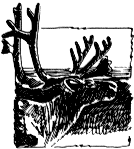 Professors Joe Medeiros (Sierra College) and Diane Carney (American River College) join oil exploration specialist Laird Thompson in a discussion of the Arctic National Wildlife Refuge in northern Alaska. Together they will discuss the biological phenomena, the ecological situation and the potential for oil and natural gas development in ANWR. Always on the table for future extraction by energy providers, ANWR is a colossal conundrum for America—preserve it or exploit it?
Professors Joe Medeiros (Sierra College) and Diane Carney (American River College) join oil exploration specialist Laird Thompson in a discussion of the Arctic National Wildlife Refuge in northern Alaska. Together they will discuss the biological phenomena, the ecological situation and the potential for oil and natural gas development in ANWR. Always on the table for future extraction by energy providers, ANWR is a colossal conundrum for America—preserve it or exploit it?
November 21
A Natural History of Belize
David Wyatt
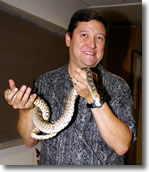 Biologist and eco-tour leader David Wyatt will present an illustrated slide and video overview of the Central American nation of Belize. This spectacular tropical country has chosen to preserve large tracts of lands for wildlife, habitat, and ecotourism. This presentation will explore and review the broad variety of habitats and typical fauna of Belize—from tropical rainforest, tropical savanna, and mangroves to the coral reefs of the cayes. The noteworthy Mayan civilization of Belize will also be examined with visits to ruins of Classic Mayan cities.
Biologist and eco-tour leader David Wyatt will present an illustrated slide and video overview of the Central American nation of Belize. This spectacular tropical country has chosen to preserve large tracts of lands for wildlife, habitat, and ecotourism. This presentation will explore and review the broad variety of habitats and typical fauna of Belize—from tropical rainforest, tropical savanna, and mangroves to the coral reefs of the cayes. The noteworthy Mayan civilization of Belize will also be examined with visits to ruins of Classic Mayan cities.
 Argentina spans broadly from lofty mountains to low wetlands and from arid deserts to lush forests. Entire regions of the country are characterized by their own unique climates, landscapes, plants, and animals. Rich in human and natural history, Argentina is a must-see South American country.
Argentina spans broadly from lofty mountains to low wetlands and from arid deserts to lush forests. Entire regions of the country are characterized by their own unique climates, landscapes, plants, and animals. Rich in human and natural history, Argentina is a must-see South American country.  Table Mountain, a remarkable volcanic mesa near Oroville, supports a magnificent remnant California’s rich wildflower biodiversity. Each spring hundreds of visitors converge on this botanical island to enjoy and photograph its spectacular and colorful floral displays. Sheets and plumes of dazzling color surround vernal pools, expansive grasslands, and plunging waterfalls.
Table Mountain, a remarkable volcanic mesa near Oroville, supports a magnificent remnant California’s rich wildflower biodiversity. Each spring hundreds of visitors converge on this botanical island to enjoy and photograph its spectacular and colorful floral displays. Sheets and plumes of dazzling color surround vernal pools, expansive grasslands, and plunging waterfalls.  Professors Joe Medeiros (Sierra College) and Diane Carney (American River College) join oil exploration specialist Laird Thompson in a discussion of the Arctic National Wildlife Refuge in northern Alaska. Together they will discuss the biological phenomena, the ecological situation and the potential for oil and natural gas development in ANWR. Always on the table for future extraction by energy providers, ANWR is a colossal conundrum for America—preserve it or exploit it?
Professors Joe Medeiros (Sierra College) and Diane Carney (American River College) join oil exploration specialist Laird Thompson in a discussion of the Arctic National Wildlife Refuge in northern Alaska. Together they will discuss the biological phenomena, the ecological situation and the potential for oil and natural gas development in ANWR. Always on the table for future extraction by energy providers, ANWR is a colossal conundrum for America—preserve it or exploit it?  Biologist and eco-tour leader David Wyatt will present an illustrated slide and video overview of the Central American nation of Belize. This spectacular tropical country has chosen to preserve large tracts of lands for wildlife, habitat, and ecotourism. This presentation will explore and review the broad variety of habitats and typical fauna of Belize—from tropical rainforest, tropical savanna, and mangroves to the coral reefs of the cayes. The noteworthy Mayan civilization of Belize will also be examined with visits to ruins of Classic Mayan cities.
Biologist and eco-tour leader David Wyatt will present an illustrated slide and video overview of the Central American nation of Belize. This spectacular tropical country has chosen to preserve large tracts of lands for wildlife, habitat, and ecotourism. This presentation will explore and review the broad variety of habitats and typical fauna of Belize—from tropical rainforest, tropical savanna, and mangroves to the coral reefs of the cayes. The noteworthy Mayan civilization of Belize will also be examined with visits to ruins of Classic Mayan cities. 
 For more than four billion years, the Earth's complex climate system has been responding to a variety of forcing mechanisms that have periodically produced intervals of prolonged cooling as well as epochs of unusual warmth. These "Icehouse" and "Hothouse" oscillations have punctuated the long-term average conditions to create dramatic changes in ancient global landscapes and prehistoric environments. This lecture will explore the complexity of the Earth's climate system, the geological evidence for past climate changes, the effects of such changes on land and life, and the mechanisms by which those changes may have occurred. Current trends in global climate will be examined from the perspective of the long-term natural variations that have been documented in the geological record.
For more than four billion years, the Earth's complex climate system has been responding to a variety of forcing mechanisms that have periodically produced intervals of prolonged cooling as well as epochs of unusual warmth. These "Icehouse" and "Hothouse" oscillations have punctuated the long-term average conditions to create dramatic changes in ancient global landscapes and prehistoric environments. This lecture will explore the complexity of the Earth's climate system, the geological evidence for past climate changes, the effects of such changes on land and life, and the mechanisms by which those changes may have occurred. Current trends in global climate will be examined from the perspective of the long-term natural variations that have been documented in the geological record. Since pre-industrial times global average temperature has increased by approximately 0.7 degrees C. The United Nations Intergovernmental Panel on Climate Change (IPCC) projects an increase of 1.1-6.4 degrees C by 2100. Published studies suggest significant ecological impacts from this amount of warming, which is already discernible in animal and plant populations. The question is not whether climate change will impact biodiversity. Rather the real question is one of how great the impacts might be and how can conservation managers adapt? Additionally, how will society cope with these and other significant changes and what can be done to prevent or reduce them?
Since pre-industrial times global average temperature has increased by approximately 0.7 degrees C. The United Nations Intergovernmental Panel on Climate Change (IPCC) projects an increase of 1.1-6.4 degrees C by 2100. Published studies suggest significant ecological impacts from this amount of warming, which is already discernible in animal and plant populations. The question is not whether climate change will impact biodiversity. Rather the real question is one of how great the impacts might be and how can conservation managers adapt? Additionally, how will society cope with these and other significant changes and what can be done to prevent or reduce them? Naturalist-artist John (Jack) Muir Laws has created an illustrated field guide to more than 1700 species of the Sierra Nevada. Now available, this comprehensive and easy to use guide will assist all Sierra enthusiasts in the identification of trees, shrubs, flowers, mammals, birds, reptiles, amphibians, fish, and insects—even mushrooms and lichens!
Naturalist-artist John (Jack) Muir Laws has created an illustrated field guide to more than 1700 species of the Sierra Nevada. Now available, this comprehensive and easy to use guide will assist all Sierra enthusiasts in the identification of trees, shrubs, flowers, mammals, birds, reptiles, amphibians, fish, and insects—even mushrooms and lichens!  He enters the stage grumbling—mumbling incoherently between huffs and puffs—something about incorrigible politicians and unforgivable misdeeds. John Muir is back—and he's more than simply disappointed.
He enters the stage grumbling—mumbling incoherently between huffs and puffs—something about incorrigible politicians and unforgivable misdeeds. John Muir is back—and he's more than simply disappointed.